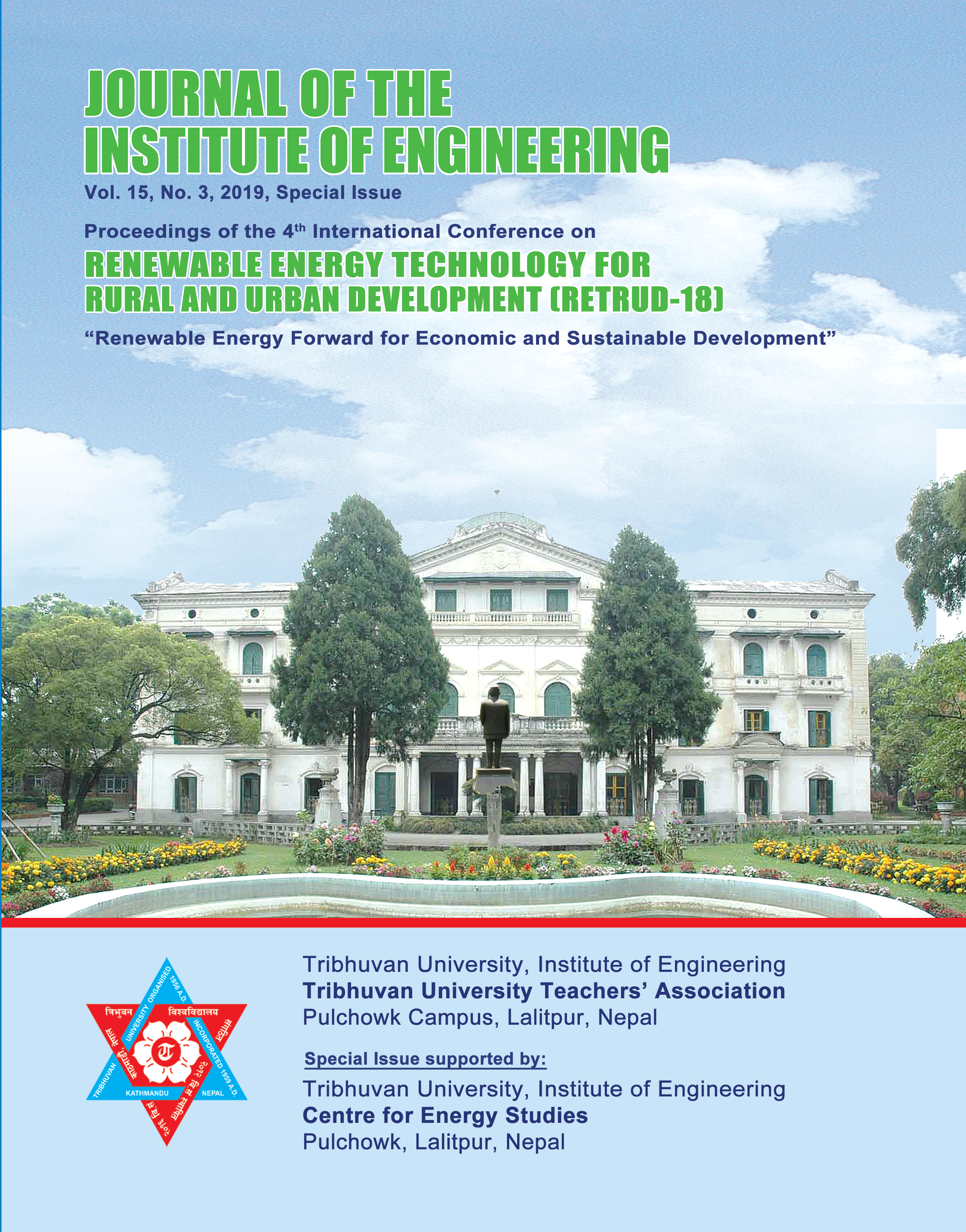Field Study on Adaptive Thermal Comfort in Naturally Ventilated Secondary School Buildings in Nepal
DOI:
https://doi.org/10.3126/jie.v15i3.32212Keywords:
Naturally Ventilated School Building, Thermal Comfort, Thermal Sensation, Comfort Temperature, Preferred TemperatureAbstract
Most of the classroom in Nepalese school buildings are thermally less acceptable due to the poor thermal insulation. They are extreme cold in winter and extreme hot in summer season leading for the discomfort in classroom. Thermally uncomfortable classroom causes the negative impact in the academic performance of students. Therefore, there should be serious attention to improve the indoor thermal environment of classroom. There are limited indoor thermal environment studies conducted in Nepalese residential buildings but not at all in school buildings yet.
This study investigated the students’ perceptions on thermal comfort inside the classroom of secondary school buildings during the autumn season of 2017 in a temperate climate (Dhading, Kathmandu and Nuwakot districts) of Nepal. 22 classrooms (33 students in average in each class) of 8 school buildings with a total of 818 students aged 12-18 years, 329 (40%) males and 489 (60%) females were participated in the survey. The two simultaneous surveys: questionnaire survey and thermal measurement survey were conducted during the regular lesson periods in each classroom. Students voted at the beginning, in the middle and at the end of the class in minutes’ lecture.
About 76% responses were found to be in either of slightly cold, neutral or slightly hot. The results show that the comfort temperature of students was around 28 °C, 26°C and 24°C in Dhading, Kathmandu and Nuwakot districts, respectively. However, the mean comfort temperature and preferred temperature was found to be around 27 °C and 26 °C respectively. The findings of this study may hopefully invoke the awareness of the school building designers, teachers and students to maintain the thermally comfortable school buildings without using mechanical system.
Downloads
Downloads
Published
How to Cite
Issue
Section
License
The Copyright is held by Journal of the Institute of Engineering, IOE, TU




